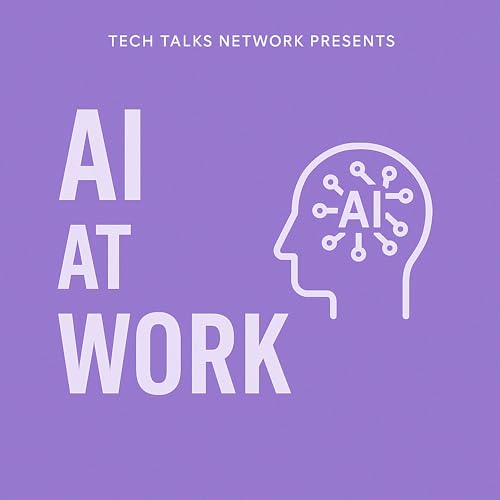
AI at Work
No se pudo agregar al carrito
Add to Cart failed.
Error al Agregar a Lista de Deseos.
Error al eliminar de la lista de deseos.
Error al añadir a tu biblioteca
Error al seguir el podcast
Error al dejar de seguir el podcast
-
Narrado por:
-
De:
-
Neil C. Hughes
What does AI really mean for the modern workplace, and are we ready for what comes next?
AI at Work is a podcast from the Tech Talks Network, the home of conversations that showcase the voices at the heart of enterprise technology. You may know me from Tech Talks Daily, where we explore a different area of innovation in every episode. This show offers a focused look at one of the most significant shifts in business: how artificial intelligence is transforming the way we work..
AI at Work is a podcast from the Tech Talks Network, the home of conversations that showcase the voices at the heart of enterprise technology. You may know me from Tech Talks Daily, where we explore a different area of innovation in every episode. This show takes a focused look at one of the biggest shifts in business: how artificial intelligence is transforming the way we work.
From intelligent automation to agentic AI and from the promise of workplace efficiency to the risks of unintended consequences, we aim to provide a grounded and accessible perspective on how AI is shaping the future of work.
If you’re using AI in your business or thinking about how to get started, this podcast is your chance to learn from the people already doing it.
Tech Talks Network 2025-
 42 m
42 mNo se pudo agregar al carrito
Solo puedes tener X títulos en el carrito para realizar el pago.Add to Cart failed.
Por favor prueba de nuevo más tardeError al Agregar a Lista de Deseos.
Por favor prueba de nuevo más tardeError al eliminar de la lista de deseos.
Por favor prueba de nuevo más tardeError al añadir a tu biblioteca
Por favor intenta de nuevoError al seguir el podcast
Intenta nuevamenteError al dejar de seguir el podcast
Intenta nuevamente -
 36 m
36 mNo se pudo agregar al carrito
Solo puedes tener X títulos en el carrito para realizar el pago.Add to Cart failed.
Por favor prueba de nuevo más tardeError al Agregar a Lista de Deseos.
Por favor prueba de nuevo más tardeError al eliminar de la lista de deseos.
Por favor prueba de nuevo más tardeError al añadir a tu biblioteca
Por favor intenta de nuevoError al seguir el podcast
Intenta nuevamenteError al dejar de seguir el podcast
Intenta nuevamente -
 30 m
30 mNo se pudo agregar al carrito
Solo puedes tener X títulos en el carrito para realizar el pago.Add to Cart failed.
Por favor prueba de nuevo más tardeError al Agregar a Lista de Deseos.
Por favor prueba de nuevo más tardeError al eliminar de la lista de deseos.
Por favor prueba de nuevo más tardeError al añadir a tu biblioteca
Por favor intenta de nuevoError al seguir el podcast
Intenta nuevamenteError al dejar de seguir el podcast
Intenta nuevamente


